
Diederik Gommers the ICfluencer
In recent months, Corona Outbreak Management Team member Diederik Gommers has used the hybrid media system to communicate his message as an ordinary citizen who is also an easy-to-relate-to COVID-19 expert. By being both understanding and critical, he uses his expertise to guide citizens and politicians to a responsible path.
COVID-19 and expert politics
The COVID-19 crisis has changed much about the political landscape. New regulations have drastically changed daily life and medical experts' opinions have become increasingly important. As the government decides on new regulations to reduce the virus' spread, it is important that knowledge about healthcare and viruses is considered. Because of this, the government has created an Outbreak Management Team (OMT). The OMT advises the government on combatting the virus and considers the uncertainties of new regulations. One notable team member is Diederik Gommers, chairman of the Dutch Association of Intensive Care (NVIC).
Gommers has received quite a bit of attention online, starting with a visit to the talk show Jinek with Famke Louise, dutch model and singer who was part of the social movement #ikdoenietmeermee, a collective of Dutch media celebrities against COVID-19 regulations. After the talk, Famke Louise encouraged Gommers to create his own Instagram, which he did. He has actively maintained his Instagram since.
In this article, I will analyze the dual screening that occurred during the Jinek interview, Gommers’ Instagram posts, and the comments he received through the lens of Silverstein and Lempert's (2012) concept of "political message", or the way in which a political figure communicates their identity by selectively taking on issues in a certain manner. I will explore how Diederik Gommers’ message is established and perceived in the hybrid media system.
#ikdoenietmeermee and Jinek
On September 21, 2020, many Dutch celebrities shared a video to their Instagram of them saying: “Together alone we can get the government under control. I am no longer participating. Free the people."
They all used the hashtag #ikdoenietmeermee, which translates to “I am no longer participating.” The movement was started by Willem Engel, founder of Viruswaarheid, a movement against the COVID-19 measures. Singer Famke Louise also participated in the movement, after which she was invited to talk show Jinek to discuss the movement's intentions and the state of society with Diederik Gommers.
This case exemplifies Chadwick's (2016) "hybrid media system": the combination of older and newer media and the ways in which they interact with each other. The Jinek talk, which was broadcast on TV (older or 'legacy' media) was a direct result of a social media movement (new media). In the interview, it became clear that Famke did not necessarily mean she was no longer following the COVID-19 regulations, but rather used the hashtag to bring attention to the fact that a lot of things were unclear and that society is suffering under the measures. Gommers replied that he understood her and that he would like to have a conversation with her to make it more clear how the COVID-19 measures are decided.
While this interview was broadcast on TV, many tweets were posted about both Famke Louise and Diederik Gommers. This practice, enabled by the hybrid media system, is also called dual screening: “[Using] social media to find out and discuss live, televised events” (Chadwick, 2016). It enables viewers to have a discussion about the event - in this case the Jinek talk - and voice opinions on the subject. Figure 1 is emblematic of many of the tweets posted about Gommers.
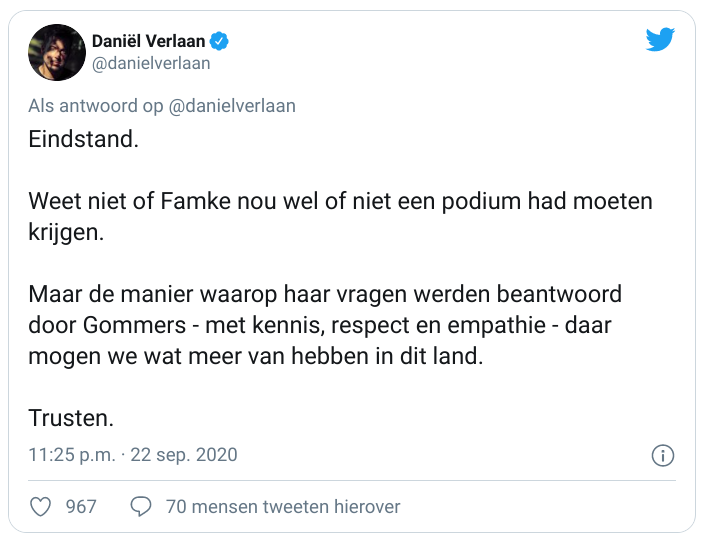
Image 1: “Final score. Not sure if Famke should have gotten a stage or not. But the way in which her questions were answered by Gommers - with knowledge, respect and empathy - we can have some more of that in this country. Night.”
Most tweets showed that viewers were on Diederik Gommers’ side, like the one above. In contrast, Famke’s point of view was quite controversial. Gommers was praised for giving knowledgeable answers that were explained in an easy manner for both Famke Louise and viewers to understand. He was also praised for understanding the problems Famke Louise brought up, acknowledging that things could be different, and offering to start a conversation with the singer to clarify how decisions about regulations are made.
Gommers' social media presence
After the interview, Famke Louise encouraged Diederik Gommers to make an Instagram account to keep the conversation going. As of January 2021, the account had over 452,000 followers and 20 posts. Gommers has embraced the hybrid media system and realized that Instagram is “a nice platform to share and discuss certain matters.” He expresses in his first post that he will also share more personal matters, like “a picture of a specialty beer.” Looking through Gommers’ Instagram page, (figure 2), this is exactly the message he portrays. The pictures are a mixture of the issues that keeps him busy - work and COVID-related things - and his image - normal, everyday things like hiking, playing hockey, and cleaning his yard (Lemptert & Silverstein, 2012).
Image 2. Diederik Gommers’ Instagram page
Almost every post has a caption that includes a personal statement, facts about the current state of the COVID-19 crisis, and an experience Gommers has had in his work. To take the post in figure 3 as example, Gommers starts out with a personal statement, to show that he is a just a regular person like his followers: “I've been young too, I know how beautiful it is to celebrate.”
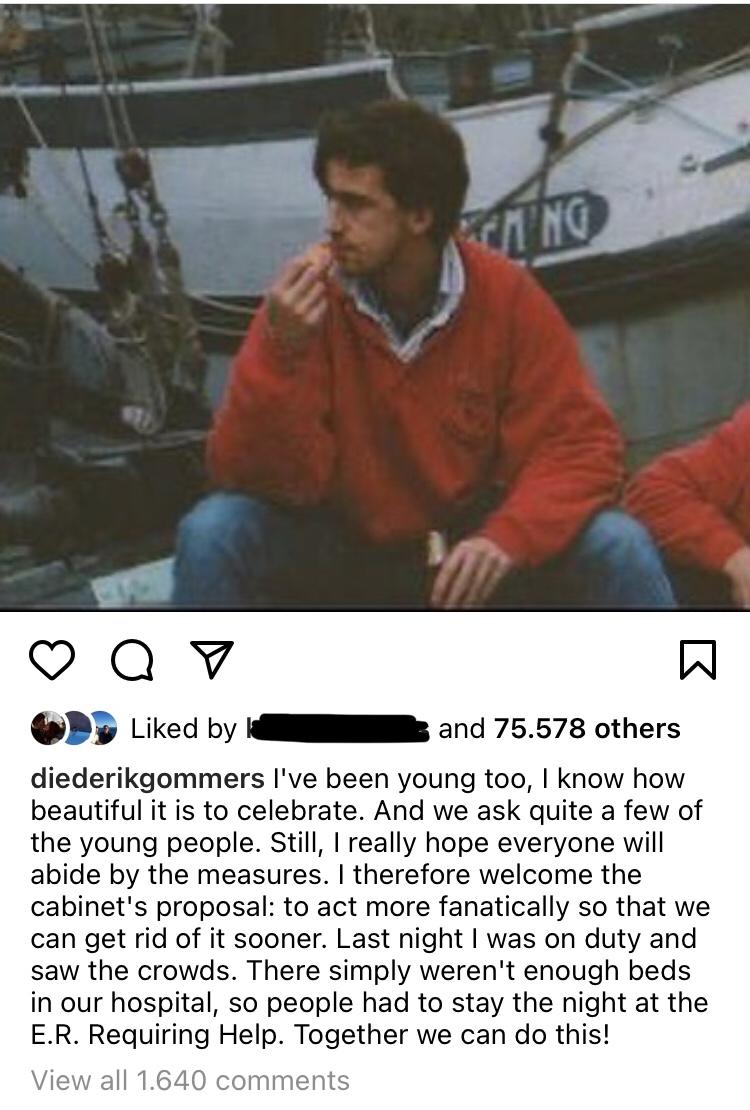
Image 3. A post from Diederik Gommers, translated
Next, he acknowledges that the situation is not perfect: “And we ask quite a few of the young people.” This is the same rhetoric he was praised for after the Jinek interview - acknowledging people's difficulties and how the regulations may seem harsh or unfair. He often emphasizes that he wants to start conversations with people, to avoid a ‘government vs. the people’ situation. However, as can be seen in the next sentence, these conversations will not change that some difficulties are necessary in combatting the virus: “Still, I really hope everyone will abide by the measures.” While he tries to build connections, he still uses the platform to communicate health and safety information. However he does so in a way that is not judgmental or demanding.
Gommers also discusses the current state of the COVID-19 crisis, mixed with his own opinion: “I therefore welcome the cabinet's proposal: to act more fanatically so that we can get rid of it sooner.” The OMT, of which Gommers is a part, is an advisory team. All decisions are ultimately the task of the cabinet. As a result, he may not be satisfied with every decision. This can be seen in figure 4, where a person comments “Maybe all civil servants that DID get a bonus can help out in health care!!” Thiscommenter refers to the fact that not all front line health workers were included in the health care bonus, even though it was requested many times. However, civil servants who mostly perform desk work were included. Gommers responds to this by saying “Yes, crazy message. How is this possible?”
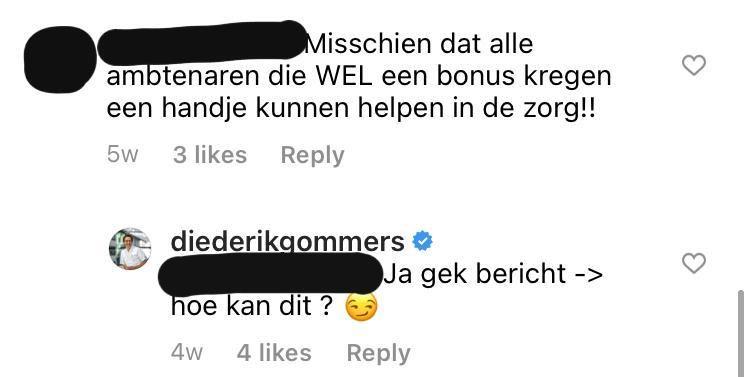
Image 4. A comment about the government and Gommers’ response: "Maybe that all officers that DID get a bonus can help out in health care!!" "Yes, crazy message. How is this possible?"
Even though it is not an explicit critique, his comment does highlight that it is strange the government decided to give civil servants a bonus, but not all healthcare workers. The way he responds to this issue again exemplifies Gommers' message, namely that he advises the government, but wants to stay critical and keep asking questions.
Gommers' message and critique are not limited to Instagram. He uses the full hybrid media system and often does interviews with news outlets. In an interview with AD on December 12th, 2020, Gommers expressed that he wanted an age limit on admissions to the intensive care unit if there are not enough beds. He stated that Prime Minister Rutte became angry when he said it was not a politician’s business to decide on things like that. Gommers' statements are inherently political, because they have a political impact. He may influence people's opinions and impact their response to Rutte’s opinions in the future.
Returning to figure 3, the caption continues with Gommers' experience at the hospital, framing the situation from a personal perspective: “Last night I was on duty and saw the crowds. There simply weren't enough beds in our hospital, so people had to stay the night at the E.R. requiring help.” He finishes his caption with some words of encouragement: “Together we can do this!” It is notable that he uses the word “we”, meaning that he very actively includes himself in society, instead of standing above them as part of a government team.
Gommers’ popularity
Gommers' posts demonstrate that he understands Instagram's media logic. He shares personal information, portraying himself as genuine and authentic. However he also shares inside information about COVID-19 that is easy to understand. This combination communicates his message: he is an understanding and humane COVID-19 expert. His content is likeable, and as a result so is he (Lempert & Silverstein, 2012). This is confirmed byother social media users' responses. Due to his likeable content, Gommers is often reposted and mentioned by broadcast media, gaining popularity for himself and his message (van Dijck & Poell, 2013).
Gommers’ Instagram was given a headstart by his aforementioned Jinek interview. On his second day on Instagram, Gommers already had 120 thousand followers. By January 2021, that amount had grown to 452 thousand followers, even more than Mark Rutte's 338 thousand followers. This difference is likely due to Gommers’ approach to social media, namely producing likeable content and responding to questions and critiques in his comments.
ICfluencer for the youth
Figure 3 also gives us insight into Gommers’ posts’ addressivity, i.e.: “quality of being directed to someone” (Lempert & Silverstein, 2012). He speaks to society as a whole (“I really hope everyone will abide by the measures”), but he puts an emphasis on young people. He tries to be relatable to them by using Instagram to reach them and by talking about his own experiences: “I've been young too, I know how beautiful it is to celebrate.” He acknowledges their difficulties.
It is possible that he explicitly addresses young people because they are less likely to become very ill from the virus and thus often do not follow regulations. It is also likely that young people who follow Famke Louise have followed Diederik Gommers after the Jinek episode and after she tagged his account in one of her posts.
This addressivity seems to be understood by the people, and his aforementioned message is confirmed by his followers. The comments under his pictures are almost solely praise for his clear and simple explanations and connection building between the government and the people. Figure 5 is an example of the praise Gommers has received, both on Twitter and in his Instagram comments.
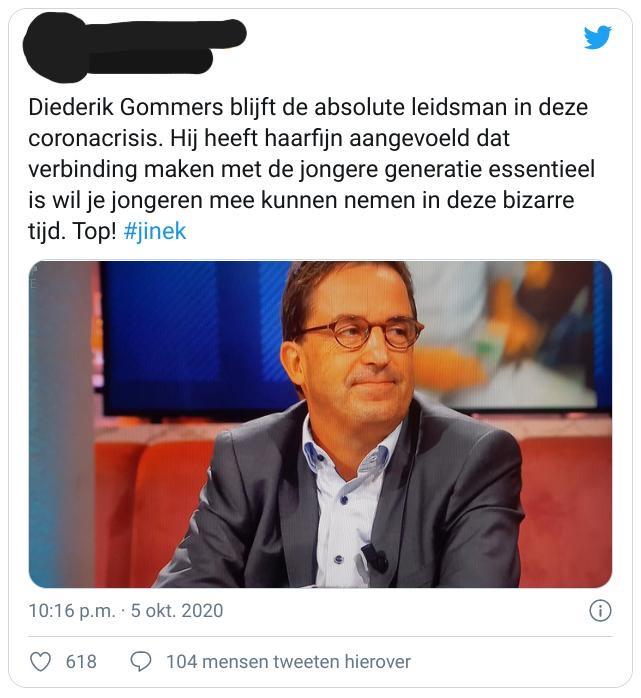
Image 5. A Tweet about Gommers: “Diederik Gommers stays the absolute leader in this coronacrisis. He has greatly sensed that making a connection with the younger generation is essential if you want to include young people in this bizarre time. Great!”
Gommers’ social media use and message have been so welcomed that he has even acquired his own title: “ICfluencer,” a play on "intensive care" and "influencer." Gommers can also be seen as a political influencer (Lewis, 2018), as he actively builds and engages with an audience, much like brand influencers do, and then “sells” the audience his political message.
The use of “ICfluencer” can be seen in figure 6, where a comparison is made between Gommers' and Tisjeboyjay's number of followers. Tisjeboyjay often posts IGTV’s - which are longer videos on Instagram - about his critiques of the COVID-19 regulations. He was also a part of the #ikdoenietmeermee movement.
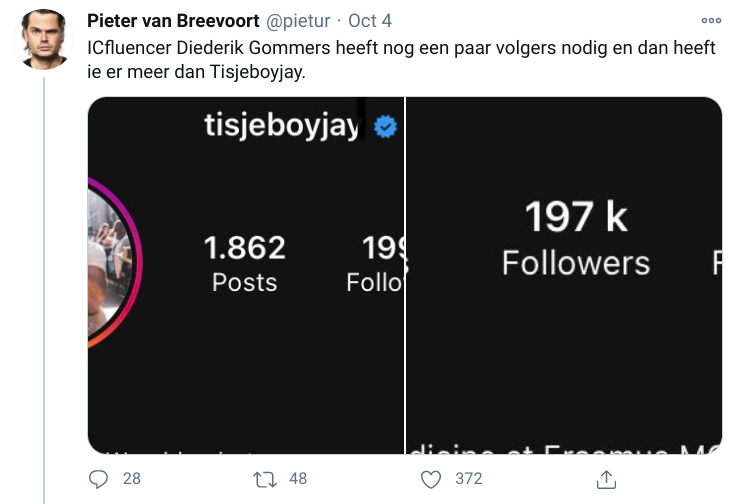
Image 6. Gommers vs. Tisjeboyjay: “ICfluencer Diederik Gommers only needs a few followers and then he has a little more than Tisjeboyjay.”
It is interesting to note that Gommers’ amount of followers now seems to matter. People are keeping track of which ‘party’ has more followers, pro-COVID-19 measures or anti-COVID-19 measures. Nowadays, attention is very scarce but important. Only with attention is it possible for someone to have influence. A person will only gain attention when audience labor is performed: interacting with posts, following the account, and sharing content (Maly, 2020). The above shows that Gommers is gaining an audience, and that his audience actively performs labor by following him. His social media presence is arguably a measure of the people’s opinion on the COVID-19 measures.
Calming detractors
If one looks hard enough, some negative comments can be found under Diederik Gommers’ posts. An example of this can be seen in figure 7:
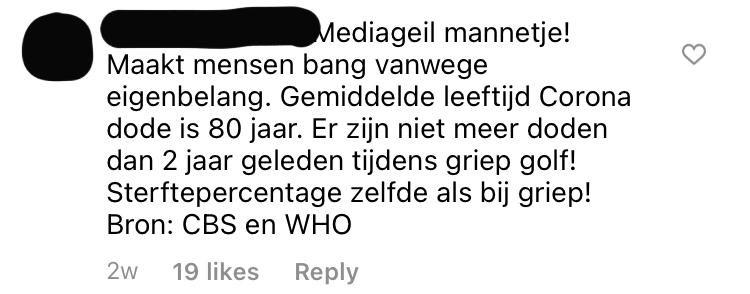
Image 7. “Media horny little man! Scares people because of his own sake. Average age Corona death is 80 years. There are no more deaths than 2 years ago during the flu wave! Death percentage same as with the flu! Source: CBS and WHO.”
The comment in figure 7 states an oft-used argument, namely that a flu wave results in same amount of deaths as COVID-19, so the measures are unnecessary. Gommers gave a long explanation to this comment, saying that the user is right about the number of deaths, however, the problem is overfilled hospitals, because of which they can no longer help patients with problems other than COVID-19.
Others among the negative comments claim that Gommers is benefitting from COVID-19 because he has a patent for a breathing system. However, he explains on his LinkedIn that the patent is ‘sleeping’ and he is not earning any money from it. He also stated that the breathing system is meant for purposes other than COVID-19 patients.
Comments like the above try to alter Gommers' message by changing both the problem - stating that COVID-19 is not serious - and his image - that Gommers is a greedy doctor that wants to benefit from sick people. However, Gommers actively goes against this by explaining himself and the situation and often agreeing with people where possible, for example he agrees with the above commenter about the number of deaths.
In the case of the patent discussion on LinkedIn, he offered to sign a paper acknowledging that he may benefit from the sales of his patent. By partly agreeing while still going against the accusations and explaining the situation, Gommers tries to calm the people down to prevent them from spreading misinformation.
A humane expert
Diederik Gommers began his hybrid media journey at the talk show table Jinek, where he received a lot of praise through dual-screened Tweets. His Instagram posts and comments contribute to his message of being a humane COVID-19 expert. He establishes this message by picking up issues like the #ikdoenietmeermee movement, voicing critiques, and debunking misinformation about both him and COVID-19. He demonstrates that he is an expert working against the virus, giving clear explanations and critically analyzing the situation. He packages these issues in a personal caption, showing that he is also just an ordinary citizen.
Gommers' captions help to specifically address young people, and his media presence has become very important. Dubbed an “ICfluencer,” his follower count is growing, showing that he is successfully producing likable content and gaining attention as a political influencer. Further his use of the hybrid media system is political: he tries to help society and the government by staying humane yet critical. His efforts to make COVID-19 science accessible to all even brought him the 2020 Machiavelli prize, a prize for a remarkable performance in the field of public communication.
All in all, Diederik Gommers has quite successfully shared his message of being an ordinary Dutchman who is fighting a deadly virus.
References
Chadwick, A., Dennis, J., & Smith, A.P. (2016). Politics in the Age of Hybrid Media: Power, Systems, and Media Logics. In Bruns, A., Enli, G., Skogerbø, E., Larsson, A.O., & Christensen, C. (Eds), The Routledge Companion to Social Media and Politics. Routledge
Lempert, M., & Silverstein, M. (2012). Creatures of politics: Media, message, and the American presidency. Indiana University Press
Lewis, R. (2018). Alternative influence: Broadcasting the reactionary right on YouTube. Data & Society.
Maly, Ico. (2020). Algorithmic populism and the datafication and gamification of the people by Flemish interest in Belgium. Trabalhos em Linguística Aplicada, 59(1), 444-468.
Van Dijck, J., & Poell, T. (2013). Understanding Social Media Logic. Media and Communication, 1(1), 2-14.